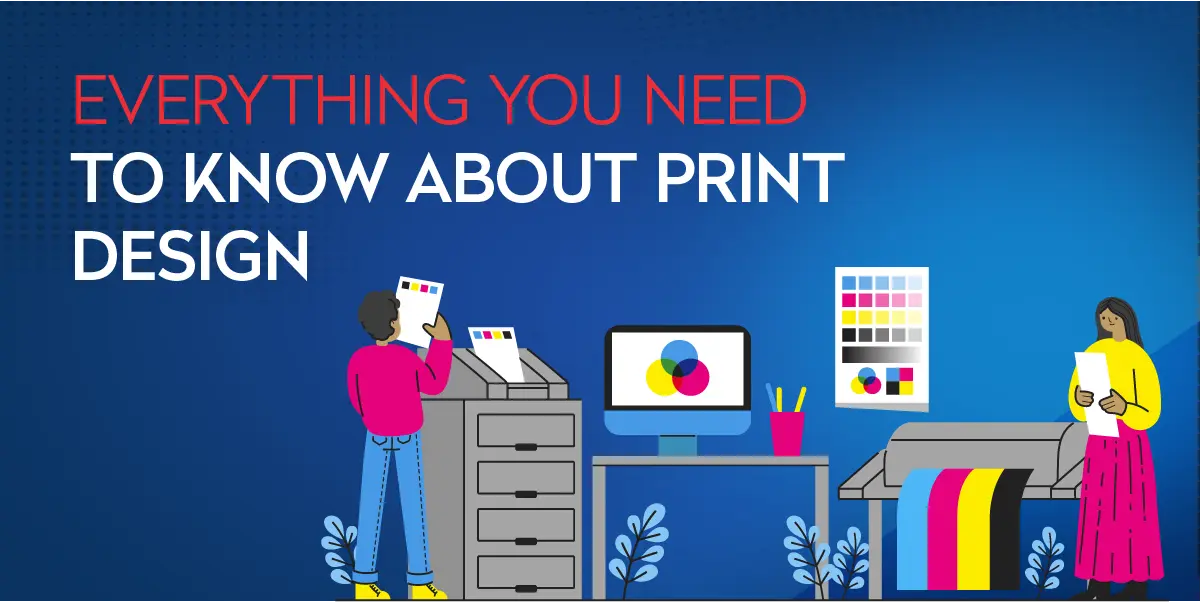Everything You Need to Know About Print Design
You may think you know the basics of what graphic designers do. They use design principles and special software to create logos, websites, and other digital content like infographics. That’s a common misconception, but there’s more to it. While digital graphic design gets most of the spotlight, print design remains a vital and relevant aspect of the design industry. Aspiring graphic designers must possess strong print design skills to stay competitive in the workforce.
What is Print Design and Why Does It Still Matter?
Print designs are visual graphics that appear on printed media, such as business cards, billboards, or brochures, as opposed to digital spaces like websites. The primary goal of print design is to use visual elements to convey a specific message to viewers. Although it might seem like print design is becoming rare in the digital age, it’s far from obsolete. In reality, print designs are an integral part of our daily lives, playing a crucial role in branding and advertising campaigns.
According to Dana S. Hewling, owner and creative director at B.ID LLC, “Tons of print collateral and mediums are still very relevant today. People should be reached in both the digital world and in the real world.” Graphic design, in any form, is all about communication. Print design is another channel to connect with your audience and convey your message effectively. Hewling emphasizes, “Until everyone can digitally project everything, print will still be needed. You should have an understanding of how to produce strong, captivating print pieces that help build stronger connections with your target.”
It’s essential to acknowledge that print design is evolving alongside digital technology. Mark Krenn, founder of Coastal Creative, highlights that experiential design and marketing “bridge the gap between online and offline worlds” through immersive print design. With new technology blending print design with the digital space, it’s clear that print design is here to stay. Advertisers seek comprehensive campaigns that reach potential customers through a combination of digital and print advertising.
Types of Print Design
Print design surrounds us, often unnoticed. Traditional business marketing relies on print media to enhance brand awareness. In publishing, a well-designed book cover can make a significant difference in book sales. Here are some types of print design you should be aware of:
1. Business cards
2. Branded packaging, labels, and shopping bags
3. Brochures
4. Billboards
5. Book covers and interiors
6. Magazines and newspapers
7. Signage
8. Stationery
9. Greeting cards and invitations
10. Calendars
11. Posters
12. Menus
13. Banners
Print Design vs. Digital Design
Print design and digital design share common goals, aiming to communicate with a target audience. The basic principles of design apply to both, but there are key differences:
Print designers must be experts at working within specific constraints and ensuring the final product is pixel-perfect. Mistakes in print design can be costly, whereas digital design offers more flexibility for corrections.
Print designers also deal with narrow parameters, such as banner sizes or word limits for magazines. Being mindful of these limitations is essential in print design.
The Value of Print Design Skills in the Workforce
Graphic designers require unique skills to excel in print design. Success in this field involves familiarity with a wider range of design software and an understanding of print design principles. For instance, print designers need to be conscious of design resolution to ensure high-quality printing.
According to Hewling, mastering Adobe Illustrator for large-format prints and Adobe InDesign for text-heavy layouts is crucial. These skills, although specific to print design, are valuable across the graphic design industry.
Could Print Design Be Relevant to Your Career?
If you’re considering a career in graphic design, print design might become a significant aspect of your job. It’s essential to explore the various opportunities within the graphic design field. Discover these 8 Types of Graphic Design Jobs You May Not Know About.
Conclusion
Print design is far from being a relic of the past. It remains a vibrant and essential part of the design industry, playing a crucial role in branding, marketing, and communication. Aspiring graphic designers should recognize the value of print design skills and the unique opportunities it offers.
FAQs
1. Is print design still relevant in the digital age?
Yes, print design is still relevant. It complements digital design and plays a vital role in branding and marketing.
2. What are some key differences between print and digital design?
Print design requires pixel-perfect precision, and mistakes can be costly. Digital design offers more flexibility for corrections.
3. What software is essential for print designers?
Adobe Illustrator for large-format prints and Adobe InDesign for text-heavy layouts are crucial tools for print designers.
4. Can print design skills be applied to other areas of graphic design?
Yes, print design skills can be valuable in various graphic design careers, enhancing a designer’s versatility.
5. Are there hidden opportunities in the graphic design field?
Absolutely. The graphic design field offers a wide range of opportunities, from print design to experiential design and much more.












